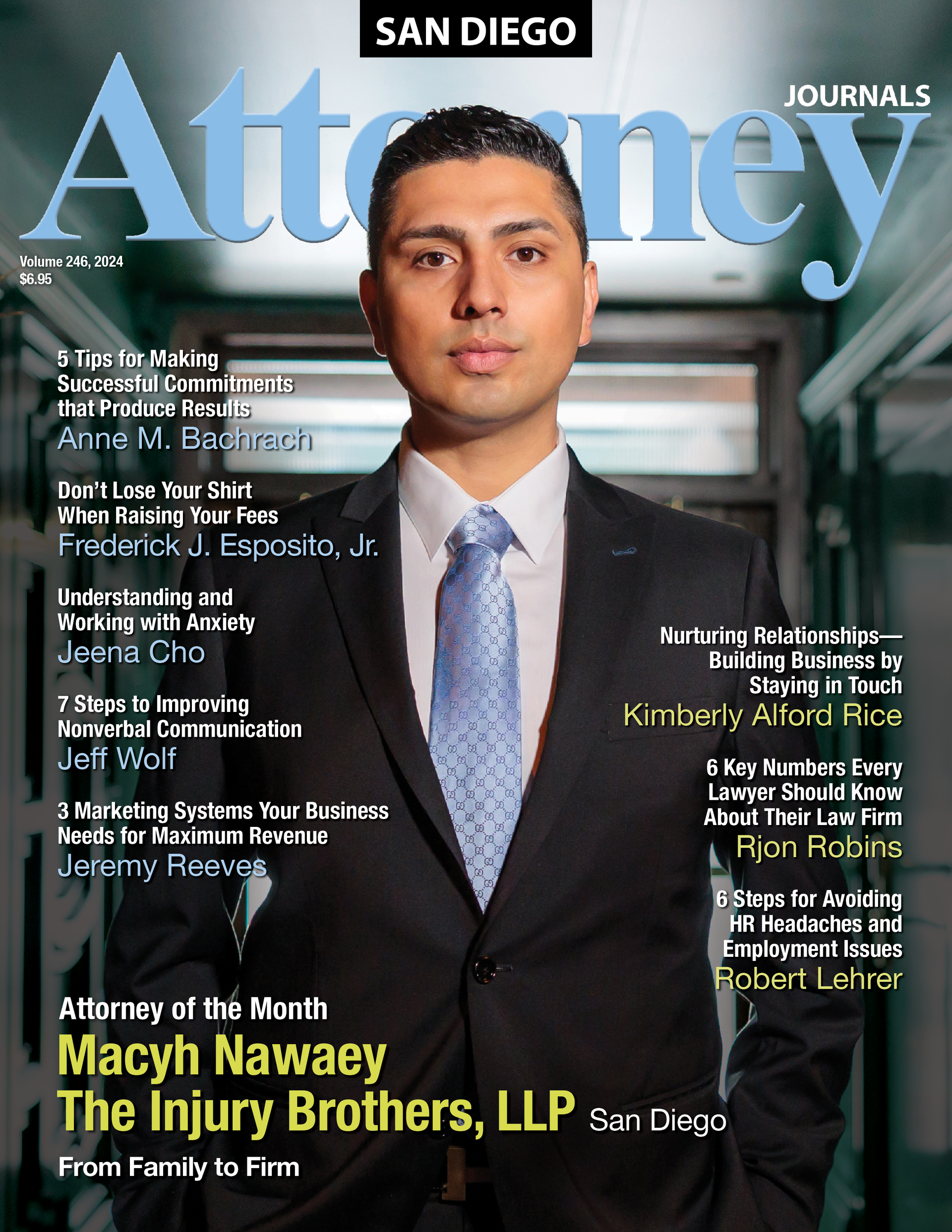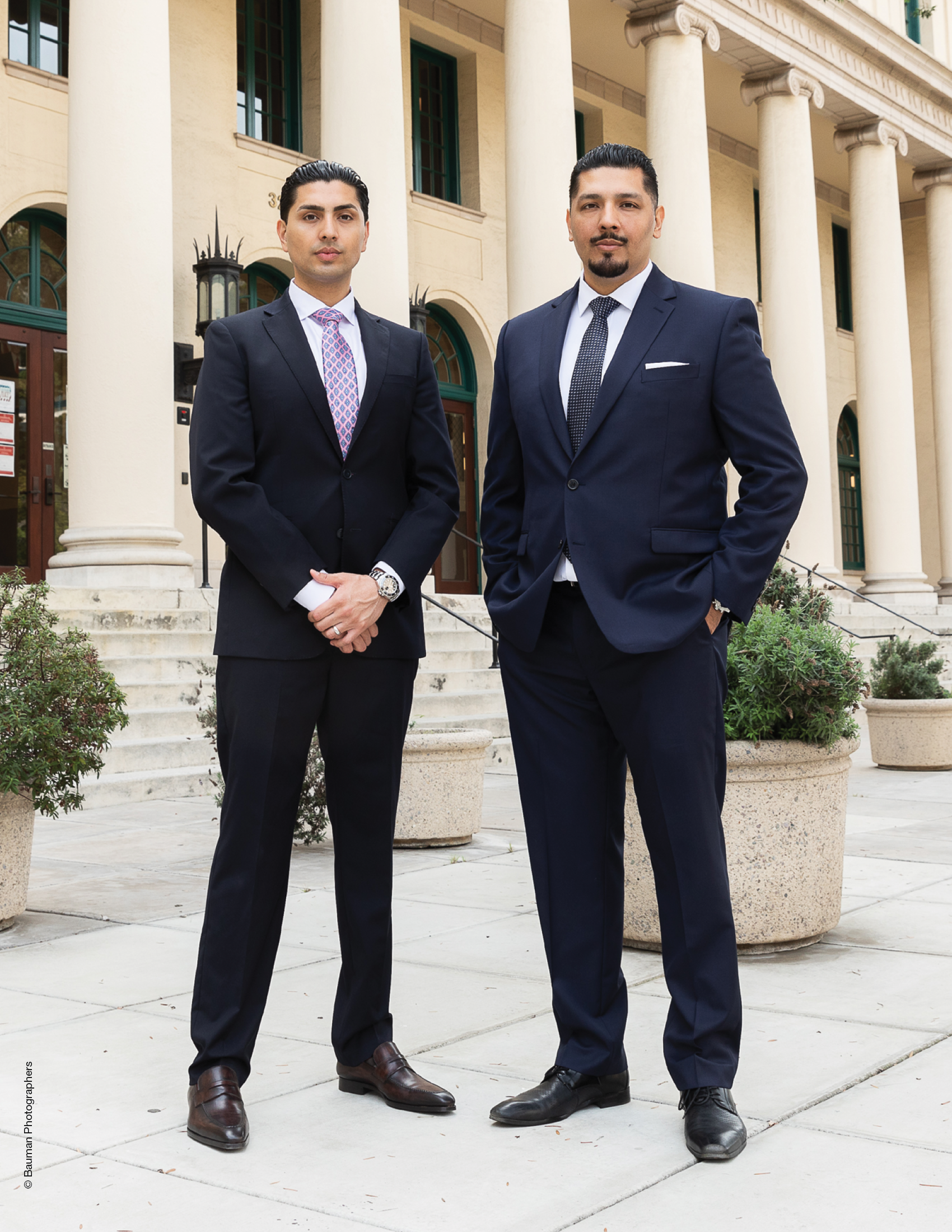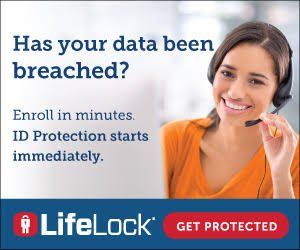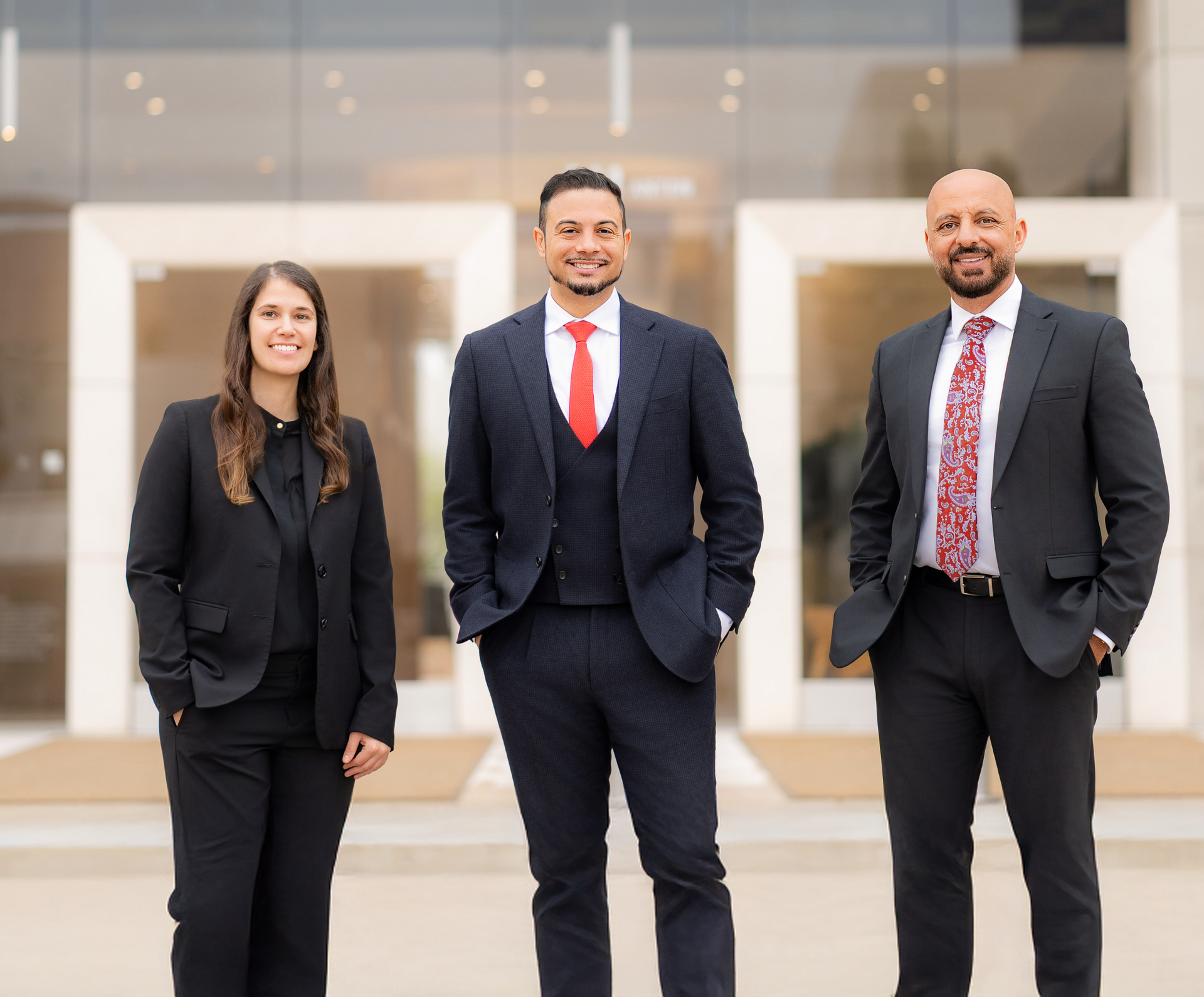From Family to Firm
Contact
The Injury Brothers, LLP
11440 West Bernardo Court, Suite 300
San Diego, CA 92127
A Journey of Purpose and Impact
When asked about the most significant difference between the “then and now” since his last Attorney Journals interview, Macyh Nawaey without hesitation states the birth of his two children—a boy two years old and a girl of two months. These events have not only made him a better person, but also a better professional.
“When I held my son for the first time, I realized this was my purpose in life and that care for someone else transfers directly to my work as a personal injury attorney. The moment was very transitional and it impacted my career as well, because I started to understand more about my clients who have children, who have family, or have those who need their ongoing care and support,” he says.
Dramatic transitions are nothing new for this family. He and his brother, Elias, immigrated to the United States from Afghanistan following the invasion by the Soviet Army and the replacement of a democracy by a communist regime. Fully embracing the freedom and free enterprise system here, Nawaey founded The Injury Brothers, LLP immediately upon graduating law school. He was soon joined by his brother, who is now a Partner Attorney in the firm.
Nawaey says that the new additions to his family have heightened his firm’s commitment to helping other families who are often experiencing the worst moments in their lives. “Regardless of the harm done to a client, we can do a great job and provide a great service on the legal side of the case. At least a family won’t have to worry about how they are going to make their rent. Or how they are going to pay their car note. Or how they can feed their kids and still cover their other bills. I always think of my own family when I meet our clients. We always ask ourselves how can we go above and beyond and work so hard on the case and do our very best,” he says.
Elias Nawaey says word of mouth is their strongest marketing tool. The attorneys take pride in spending as much time as necessary with each client. They not only talk, but they listen. They explain the often-complex case they’re involved in. “I won’t let 24 hours go by before they hear back from me. Whenever possible and practical, I’ll call or text them right away. If I’m in a meeting or a court hearing, I’ll let them know I’ll be calling back at a specific time, perhaps immediately after the meeting, but certainly within 24 hours. We believe it is essential for our clients to get responses right away. And I think so much of that drive here is because we’re dealing with a serious issue for the client, perhaps the most serious issue they will ever face. One of our most important jobs is to reduce the anxiety and stress levels of our clients.”
Clients agree with that assessment.
“TIB is amazing. My husband and I clicked with them automatically. They answered every call, every text, always kept us updated. They genuinely care about their clients. I’ve even referred a friend to them and she called me to thank me! Hopefully, nothing happens in the future, but if so, they will definitely be hearing from me again. Thank you for everything.”—Elizabeth A.
Co-founders/Partners: Macyh Nawaey and Elias Nawaey
Creative Solutions to Basic Problems
The Injury Brothers focus on personal injury, workers compensation, wrongful death, car accidents and related issues. Those intensely personal issues for their clients require more than knowledge of the law. They require commitment and, often, innovative thinking.
The firm has been highly successful in open-policy cases—bad faith cases in which the insurance company denies coverage to their own insured. Home fire cases are frequent examples, tragic incidents in which people have been impacted, or hurt in a way or have lost a significant amount of assets. The insurance company refuses to cover the loss because of some (they claim) exclusion or exception noted in the policy. The situation is most often devastating for the individual homeowner and his family. “Those are the cases where we will then represent the insured and sue their own insurance company, if we believe there’s enough evidence to prove that the insurance company should have covered that loss. The insurance company may have forgotten about the rights and the health and well-being of their insured or client, but we haven’t,” Macyh Nawaey says.
The firm recently helped a client through an “open policy” case involving a young college couple injured in an auto accident, a head-on collision. Each was seriously injured, but liability was disputed by the other driver’s insurance company. The firm found a nearby business video that showed the other driver was clearly at fault. After liability was put to rest, the insurance began claiming that the couple was not “all that” injured. The brothers say this response is a typical insurance company tactic they frequently encounter. They filed a lawsuit immediately after their demand expired. During litigation, the case settled for more than three times the policy limits of the at-fault driver’s insurance, with the insurance company paying the entire settlement.
Elias Nawaey says, “There is a lot that goes into these cases, strategy, and experience/knowhow of opening policies. But time and time again, we have done so successfully. Insurance companies have teams of lawyers, so victims of accidents deserve the same and need the same quality of representation to fight for them. That’s where we come in.”
The firm has recently engaged in a number of hybrid cases, meaning someone at work is injured by a third party. For example, a worker or employee who suffers an injury due to a third party’s fault. The worker can be involved in a motor vehicle accident while driving for a company, for example. Normally, the injured party would be covered by workers compensation insurance, but the injured person would also have an opportunity to also go after that third party (through his attorney or law firm) who caused the injury, collect from them, and still have their client covered by workers compensation.
Elias Nawaey says, “We’re able to optimize our client’s position. That helps us stand out because many firms in San Diego County often send such cases to third-party attorneys. We do both in house. So that helps us get justice for our clients swiftly and efficiently.”
The firm’s track record is significant. For example, three recent cases resulted in millions of dollars in compensation when the insurance policy limit was only in the tens of thousands of dollars.
Making an Impact
“Being a new parent has had a genuine ‘then and now’ effect on our firm in that we’re more than ever focused on more impactful cases. We’re taking on cases that are more life-changing for our clients.” Macyh Nawaey cites, for example, a case in which an injured woman is told “no” from a number of firms. The woman, a single mother, loses her car, which means she loses her means of going to work and earning a living. That, in addition to the pain and injury she suffers. “When someone like that calls, we respond and we respond quickly. I was able to get that client’s vehicle replaced and get her paid for her injuries. It still was my favorite case of the year because I’m helping someone whose car to her means so much more than just a vehicle. It’s her only mode of transportation and how she takes her children to school. I think becoming a parent makes me even more proud of those cases.”
The word impact doesn’t necessarily refer to the size of the settlement, he says. A woman who has an MRI indicating a serious whiplash that will require months to heal is not a life-or-death case, but it is nonetheless a significant matter to the injured person and her family. “That’s the kind of case I love to handle. I’m reminded of the story about someone helping another person by giving them five dollars when they only have six dollars in hand. That’s more impactful than a millionaire handing over a twenty-dollar bill. I’ve literally seen cases where dollar for dollar it was the smallest case for us that month or that year. But the person literally teared up and gave me a hug picking up their settlement check. We all have a limited time on Earth. Helping others, when it is all said and done, is the most important thing we can do.”
Many injury cases are mostly black and white in terms of liability or who caused the accident or injury. The challenge is getting the best results for the clients, while fighting insurance companies and their defense tactics. “We care about these cases. And I see this as my craft. I see this as what I’m spending time away from my children, away from my family doing. And these families who’ve been so seriously impacted calling on me to help them. I feel honored, in the sense that they would choose me and ask me to help them. So, anything other than a stellar job would keep me up at night. That’s the kind of personality I have. I make sure there’s not a single stone unturned for our clients,” Macyh Nawaey says.
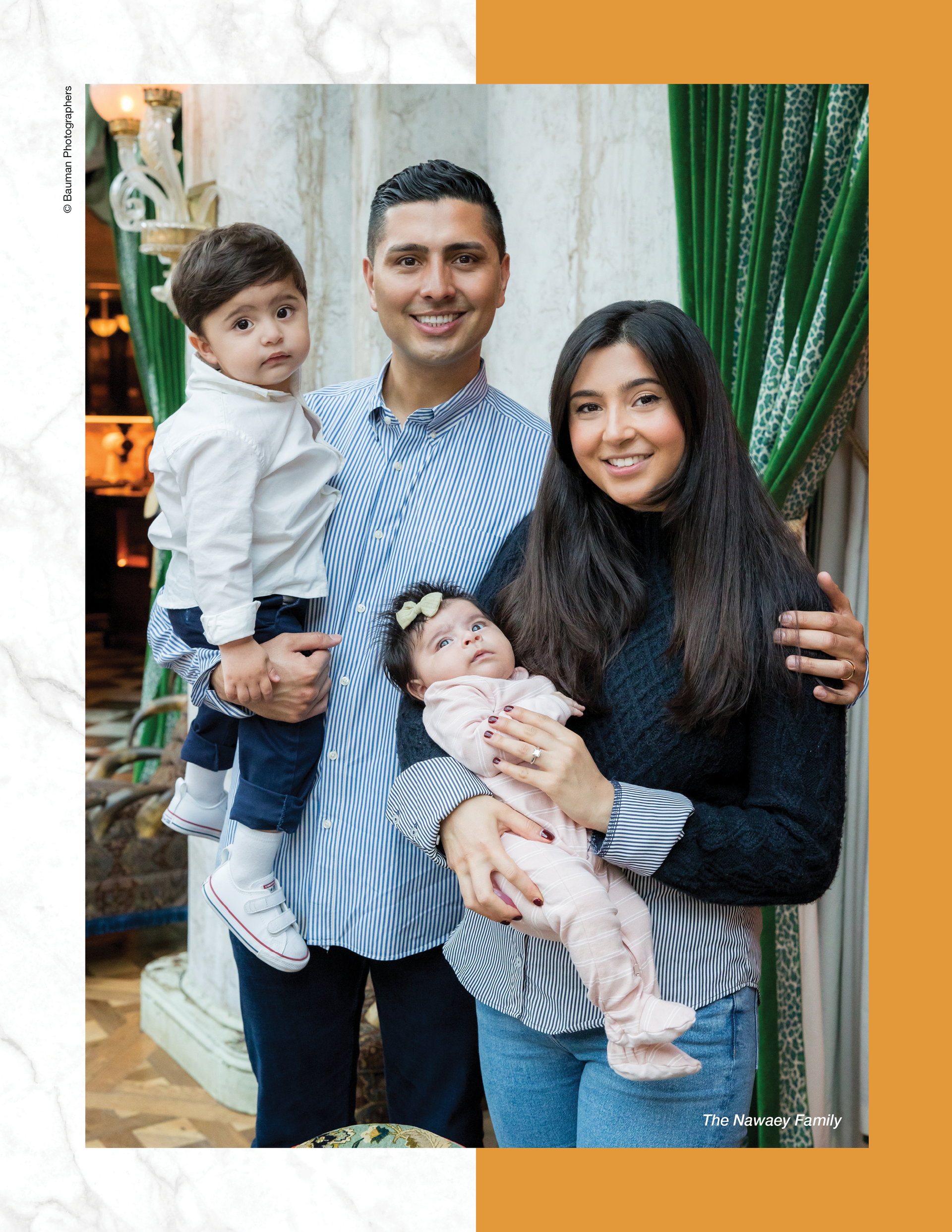
Taking Care of Family at Home and Work
“Being family orientated, we make sure our firm reflects that essential element in our culture and environment to all our clients. Family is the building block of a successful culture, so we also want everyone to put family first. Additionally, we want to encourage a giving atmosphere. Giving to the needy is something that is very near to both my brother and me. Each time we win a big case, we make sure to give some of that back by charities and nonprofits,” Elias Nawaey says.
His brother adds, “Giving back has just become a big part of the way we do business. When we look at cases and we go, ‘Hey, you know, what if we hit the numbers that we want on these cases, we should really take a certain amount of each and give back.’ And we do.”
The firm and its team members are big proponents of giving back to their profession and the community at large. They have donated tens of thousands of dollars to numerous charities and non-profit organizations in 2023 alone—most having to do with helping the homeless and feeding the hungry.
Macyh Nawaey says that being a parent has significantly enhanced those decisions. By his estimate, that increase approaches an 80 percent increase over an already significant effort. “The worst thing I can think of is a child being hungry and a parent who isn’t in a position to do anything about it because of an injury or an accident.”
One of the firm’s most ambitious efforts this year is in arranging through an international charity, Zakat Foundation, for the sinking of a water well in Africa, a place where water is limited and, in some cases, undrinkable or even dangerous to health. Many people walk miles every day just to obtain drinking water for their family. Elias Nawaey says, “Once the water well is built, they will affix a plaque dedicated to the people who funded the project. We placed it under our children’s names.”
Contributing to better the lives of others is an extension of the brothers’ and their firm’s commitment to serving a purpose with passion. Macyh Nawaey says, “I don’t see it as an ‘option’ so much but rather a duty, for us to all help give to those in need. We are blessed to be doing this. We’ve worked hard enough and we’ve been lucky enough to be in a position to help others through our donations, volunteer work and through our legal abilities. It’s really an honor to be in such a position. One thing you can say about The Injury Brothers comparing then to now is that we’re even more passionate about building our business—and building it the right way.”
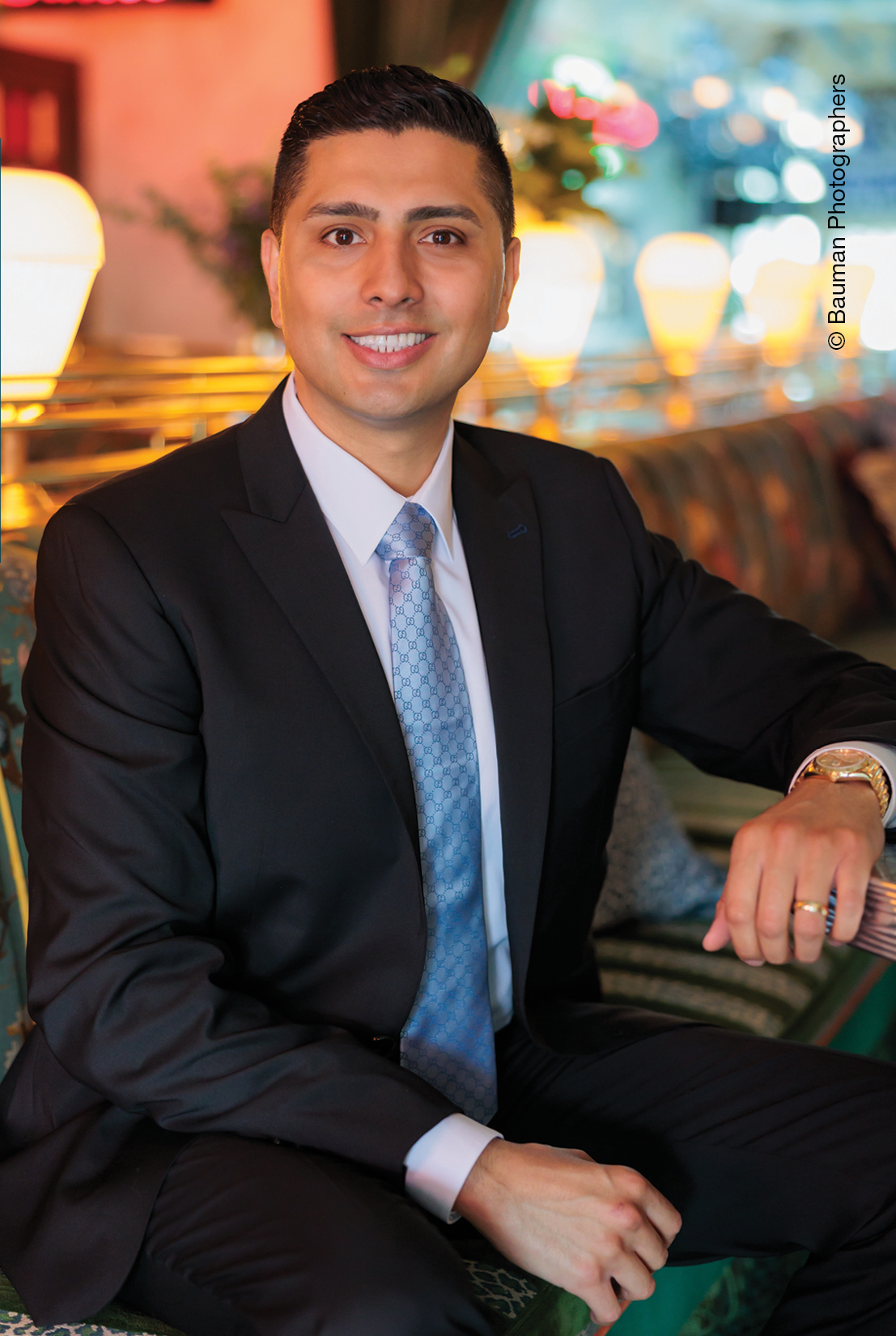
» Education
- Thomas Jefferson School of Law, Juris Doctor – 2014
- University of California - San Diego, BA – Bachelor of Arts – 2011
» Awards and Honors
- Super Lawyer, Super Lawyers – 2021
- Rising Star, Super Lawyers – 2020
- Rising Star, California Super Lawyers – 2019
- Clients’ Choice Award, Litigation – AVVO – 2016
» Associations and Memberships
- North County Bar Association, 2016 - Present
- Consumer Attorneys of San Diego, 2016 - Present
- San Diego County Bar Association, 2015 - Present
- American Bar Association, 2015 - Present
- State Bar of California, 2015 - Present
- San Diego North County Bar Association, 2015 - Present
- United States District Court for the Southern District of California, 2015 - Present
- Los Angeles County Bar Association, 2015 - Present
- Young Lawyers Club, 2015 - Present
- Thomas Jefferson School of Law Alumni Association,
- 2015 - Present

